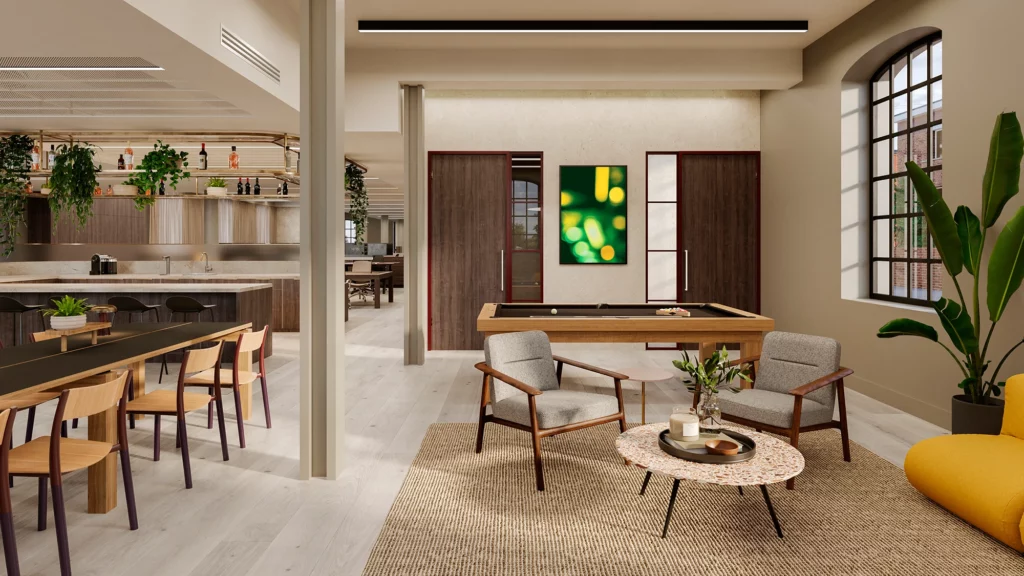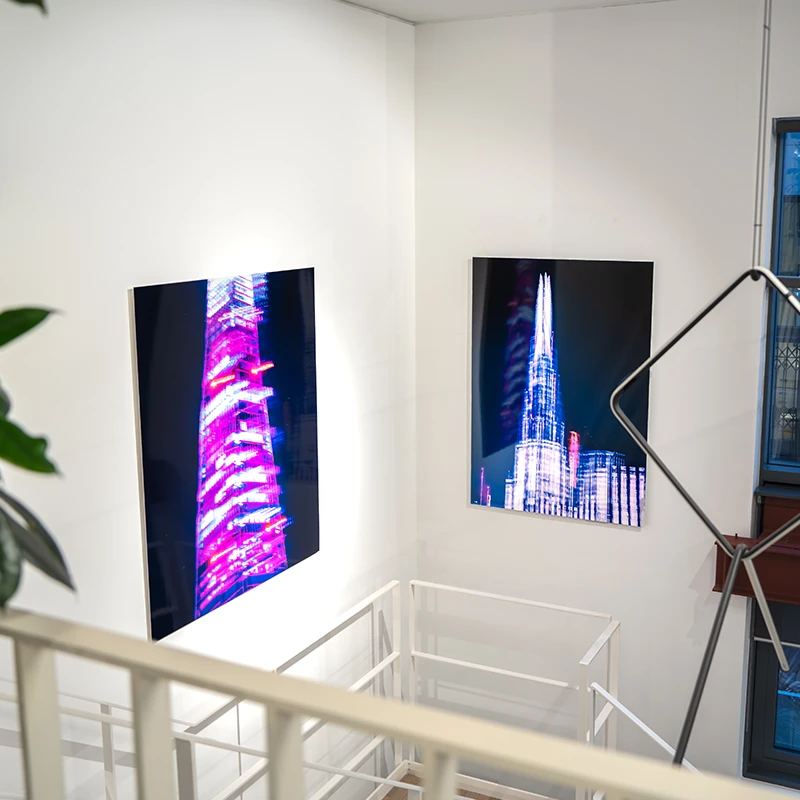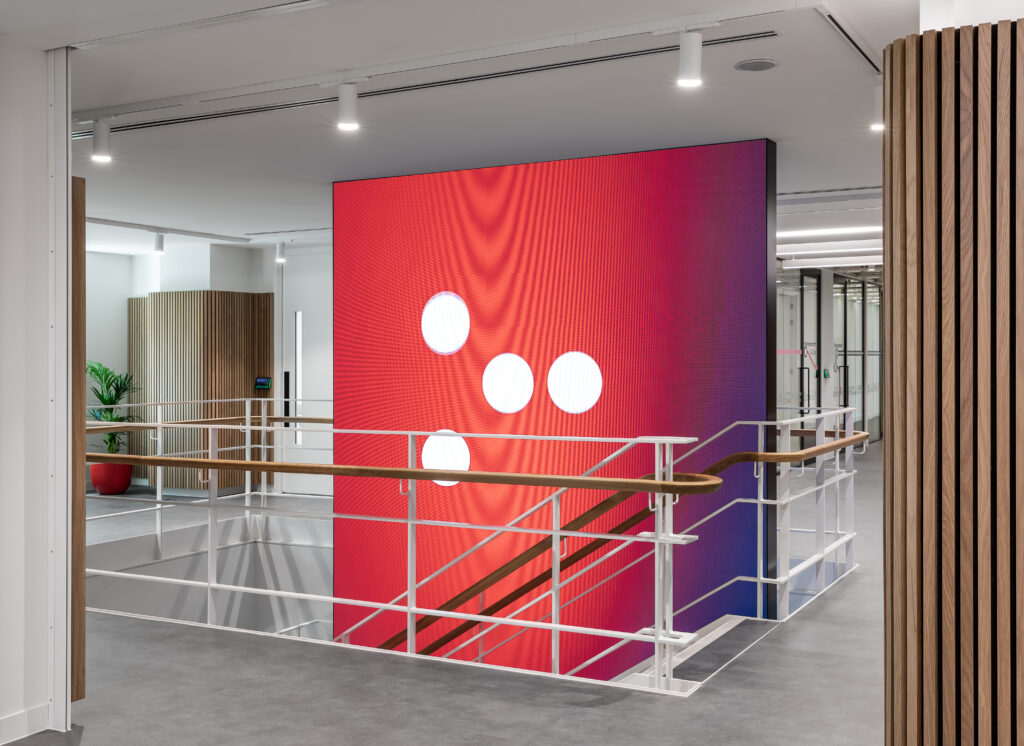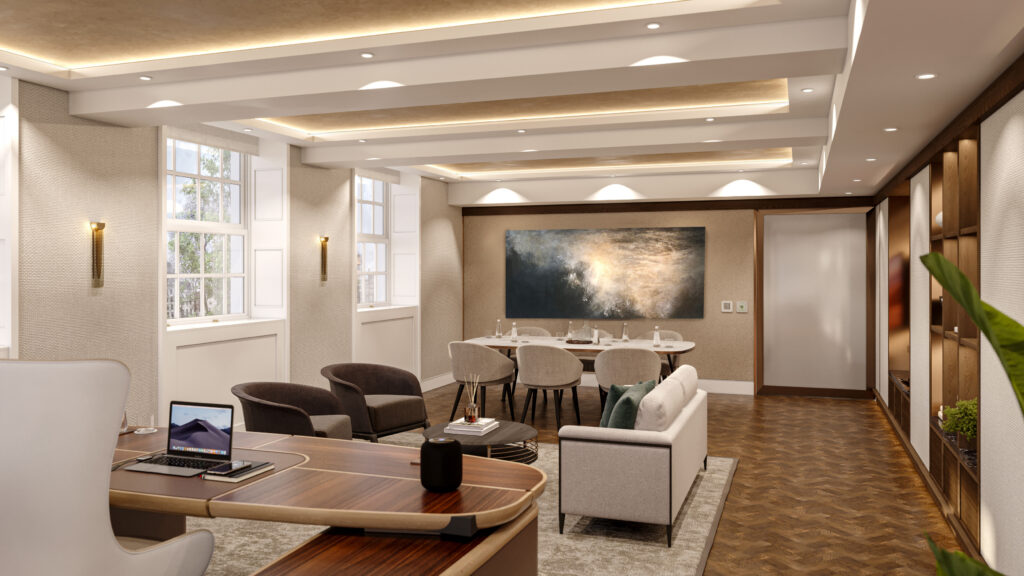- Knowledge
The value of art to society is well established and much celebrated.
In galleries, homes and public spaces, art evokes emotion and creates rich, sensory experiences. It creates connections between people and improves our understanding of different places and cultures.
So too in the workplace, art can have a profound impact. On an aesthetic level, it brightens corporate spaces, creating a more stimulating and visually appealing work environment. It also helps to reduce stress, boost wellbeing and improve workplace culture, while driving up employee engagement and productivity.
In fact, the strategic incorporation of fine art in the workplace can lead to benefits for employees and clients alike.
Why do we have art in the workplace?
Art in the workplace serves various functions. First and foremost, its role is to enhance the aesthetic appeal and ambiance of the work environment. This is increasingly important in the post-pandemic era, when people need compelling reasons to come into the office. Indeed, blank walls and drab corporate interiors no longer cut it for modern employees, the majority of whom expect to be stimulated and inspired by their workplace.
Art is often deployed to transform key areas of an office, or make high-impact statements as people enter a building. It can also provide visual markers for employees as they navigate maze-like corporate interiors, helping to connect different levels and spaces. At the same time, art strengthens connections between staff, providing common visual references and reinforcing company values.
In this way, art can boost workforce unity and cohesion, especially if employees themselves are involved in the selection and positioning of the artwork. Giving employees a sense of ownership, when companies include their people in decisions around corporate art they benefit from noticeable uplifts in performance. A study by the University of Exeter found that employees who had control over the design and layout of their workspace, including the choice of art, were 32% more productive.

What are the benefits of art in the workplace?
Historically, fine art was developed during the Italian Renaissance for purely aesthetic purposes. However, over the years, fine art has proven to create more benefits beyond its visual appeal, such as:
Asethetics
Neuroaesthics
Mental health and happiness
Productivity increase
A sense of community
Here, we explore the multiple benefits of incorporating artwork into the office environment and examine some of the key improvements companies can achieve by embracing fine art.
Aesthetics
Within the work environment, fine art creates aesthetic value. Its compositional qualities – colour, texture, line and form – enhance spaces and enliven interiors, creating a more aesthetically pleasing environment in which to work. It brings character and personality to boardrooms, meeting rooms, open plan areas, receptions and stairwells, infusing corporate spaces with beauty and meaning.

Neuroaesthetics
Beyond its visual appeal, fine art also provokes thoughts, moods and emotions in the viewer. The study of this process is known as ‘neuroaesthetics’. Using science to investigate people’s response to art, this burgeoning discipline confirms what artists have known for centuries: that art stimulates changes in the human brain which can positively affect our wellbeing and productivity.
According to neuroscientists, only 5% of mental activity is conscious, which means we’re often unaware of the psychological influence of qualities such as light and colour. In neuroaesthetics, the moments in which people are affected by art – either consciously or unconsciously – are referred to as ‘aesthetic moments’, during which the viewer experiences intense feelings. In fact, studies show that art connects to areas of the brain that also ‘light up’ under MRI examination when people recall memories or contemplate their emotions.
Interactions with artworks can therefore trigger deeply pleasurable and immersive experiences. In the work environment, this means art helps to create spaces in which employees feel better, happier and more connected – spaces to which they will want to return.
Mental health and happiness
In 2020, the Stevenson/Farmer Review of mental health and employers discovered that the cost to the UK economy of absences due to stress and anxiety was over £45 billion. For employers keen to reduce this cost and meet their duty of care to employees, the introduction of fine art in the workplace can have a major positive impact.
It’s been observed that experiences of intense emotion and awe stimulated by art – those ‘aesthetic moments’ mentioned above – can significantly reduce levels of inflammation that contribute to cardiovascular disease, depression, diabetes and other chronic conditions. These experiences can also improve people’s cognition, increasing the ease and efficiency with which they process information. And this in turn reduces stress and anxiety in work situations.
Art helps to reduce psychological pressure in the same way that biophilic design features – plants, trees, green walls – are known to promote mental wellbeing and calm. Indeed, studies from behavioural scientists have shown that employees in offices with art and plants experience a 45% and 60% uplift in wellbeing and engagement respectively. It has also been shown that art depicting landscapes or scenes of nature are particularly effective in creating tranquil environments that reduce stress and improve concentration.
In these ways, fine art can create ‘positive distractions’; moments of escape from workplace deadlines and routines, while its presence contributes to an atmosphere in which employees feel valued and motivated.

Productivity increases
As workplace art helps to improve mental health and happiness, so it enhances employees’ focus and cognitive performance, leading to increased productivity. By creating an inspiring and creative environment, workplace art motivates people to come into the office, where they’re far better placed to engage productively with their colleagues. It encourages employees to share opinions and ideas, shaping a more collaborative work culture. And it can reduce mental fatigue and stimulate the brain, making employees sharper and better equipped to perform their tasks. Meanwhile,
certain types of art, such as abstract art, encourage bold, innovative and out-of-the-box thinking.
As mentioned earlier, productivity improvements of over 30% have been observed when employees are given a say in the selection of workplace art. Psychologists suggest that when employees are involved in art planning, they’re able to project their social identity onto their work environment, giving them a sense of ownership, belonging and permanence. Their role in this process tells them their office is a place that reflects their views, a place in which their voices are heard and choices respected – all of which drives up engagement, retention and output.
A sense of community
Above all, workplace art promotes a sense of community, reinforcing employees’ connection to each other and to their company. Employers who introduce art into their offices therefore strengthen company culture and values, which increases trust and loyalty among employees and clients.
By commissioning art from local artists, companies can expand these efforts to encompass the wider ‘community’, perhaps tying in with corporate responsibility and sustainability initiatives. Certainly, through their investment in fine art, companies can demonstrate long-term commitment to their people and society at large.
Oktra
Find out how Spacial Artworks transformed the head-office of a leading UK design firm through bespoke fine art.

How to create an art strategy for your office
Every workplace art strategy begins with a clear definition of your needs. Art should respond to specific physical and conceptual contexts, so it’s important to establish what type of art you’re looking for and what you want it to achieve.
Do you need to reinforce workplace branding and company values? Do you want to create an emotional impact? Or do you simply want to visually enhance specific parts of your space?
Once you’re clear on your objectives, we can begin to help you develop a personalised art strategy, crafted and curated to your requirements.
Of course, every art strategy will be different, but in each case, we apply our underlying principles: connect, enhance, transform, express. What this means in practice is that we create strategies that:
- Bring your audience closer with artwork, creating deep and lasting connections – artwork that links aesthetically to your design scheme, office space, and brand, while making employees feel happy, inspired, and motivated.
- Enhance spaces through stunning artwork, colour schemes, and designs, creating meaningful interactions with the physical environment – for example, creating high visual impact for clients visiting your office.
- Transform your workplace spaces – from reception to meeting rooms to stairwells, creating unforgettable experiences that enhance your environment.
- Express your values, beliefs, and brand to tell a powerful, personal story.
Lasting value
Whatever its ultimate scope and focus, a workplace art scheme will deliver genuine lasting value to everyone that uses your space. As we’ve seen, on an aesthetic, neuroaesthetic, wellbeing, and productivity level, fine art can drive significant enhancements across an organisation.
At Spacial Artworks, we can work with you or an interior designer to create an art strategy that transforms spaces and experiences for everyone involved in your business.
Get in touch to find out how we can help you incorporate fine art into your work environment.


